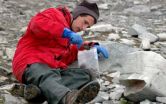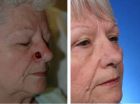(Press-News.org) An additional 1,000 patients could undergo kidney transplants in the United States annually if hospitals performed more transplants using paired kidney exchanges, new Johns Hopkins research suggests.
Also known as kidney chains, paired kidney exchanges, which allow incompatible donors to give a kidney on a loved one's behalf and ensure that loved one gets a compatible kidney from a third party — usually a stranger — in return, have become much more common since 1999 when The Johns Hopkins Hospital pioneered the practice. But the dramatic growth in the use of these exchanges — from 93 transplants in 2006 to 553 in 2010 — has now stalled, primarily because of financial barriers related to logistics, administrative costs and insurance coverage for donors, researchers say.
A report on the research appears online in the American Journal of Transplantation.
"There are more than 100,000 people waiting for a kidney transplant in the United States. For the one-third of patients who manage to find a living donor but learn they are the wrong blood type or are otherwise incompatible, kidney exchanges offer a very high rate of successful transplantation," says study leader Dorry L. Segev, M.D., Ph.D., an associate professor of surgery and epidemiology at the Johns Hopkins University School of Medicine. "But many transplant centers have not found a way to make this possible for their patients."
The success of kidney chains depends on the best possible matches, and these depend in turn on the largest possible pool of transplant candidates and their incompatible donors. With more centers participating, Segev says, more matches can be found and more transplants can be done.
The researchers found that between January 2009 and December 2011, while 161 transplant centers (77 percent of the 207 in the United States) performed at least one transplant through a kidney exchange, most were performing fewer than would be expected. In fact, more than 50 percent of all exchanges and chains were concentrated in only 22 centers. The largest number performed at a single center was 137. "If every center performed exchanges at the same rate as the top centers, an additional 1,099 transplants could take place annually," says Allan B. Massie, Ph.D., one of the researchers involved in the study.
The biggest barrier to increased paired exchange and chain transplants, Segev says, is that there is no consistent or reliable entity, either within or outside institutions, paying the extra expenses associated with kidney exchanges, which require personnel and time spent making matches, coordinating logistics among various centers, and quickly shipping organs across town or across the country, to wherever the patient in need is located. In addition, there is no standard way for insurance companies to determine which company pays for which donor's surgery.
Segev notes that some centers regularly perform two- and three-way transplants. In 2009, Johns Hopkins performed an eight-way, multi-hospital kidney transplant, which involved an altruistic donor and seven pairs of people — each made up of one person in need of a kidney and one willing but incompatible donor.
"At this point, every center in the country has the logistical and intellectual ability to do these exchanges," says Segev, director of clinical research for transplant surgery at Johns Hopkins and co-developer of one of the first computer algorithms that make exchanges possible. "Over 75 percent of centers have performed at least one kidney exchange transplant over the past three years, suggesting that most of the limitation is not a willingness to participate but rather financial and support service barriers."
Few hospitals used kidney exchanges until Johns Hopkins researchers in 2005 published a paper in the Journal of the American Medical Association showing the extent to which patients could benefit from the procedure. Several regional databases of transplant patients and their incompatible donors have been developed in recent years, offering the potential for even more transplants if more patients and donors enter the mix.
Many patients awaiting transplants remain unaware of exchanges, Segev believes. Patients need to ask to participate. The waiting list for kidneys from deceased donors is three to five years and can be up to 10 years in some regions of the country. And 5 to 15 percent of patients on dialysis die every year waiting for a transplant. Having a kidney from a living donor means a patient can undergo transplantation without waiting in line for a deceased donor transplant.
"Kidney exchanges have done a lot of good," Segev says. "But we could do three times as much good if more centers did more of them."
###
The study was supported by grants from the National Institutes of Health's National Institute of Diabetes and Digestive and Kidney Diseases (RC1 DK086731) and the Charles T. Bauer Foundation.
Other Johns Hopkins researchers involved in the study include Sommer E. Gentry, Ph.D., and Robert A. Montgomery, M.D., D.Phil.
For more information:
http://www.hopkinsmedicine.org/doctors/results/directory/profile/0008001/dorry-segev END
Researchers have determined a way to predict and protect against new strains of the flu virus, in the hope of improving immunity against the disease.
Influenza is a rapidly spreading acute respiratory disease. Worldwide, annual seasonal epidemics of the flu result in 3-5 million cases of severe illness, and up to 500 000 deaths. A newly emerged virus can spread across 74 countries in 2 months.
The study led by the University of Melbourne with Monash University and international colleagues has found how to predict and potentially stop the mutating cells of the influenza ...
Although they live in similarly extreme ecosystems at opposite ends of the world, Antarctic insects appear to employ entirely different methods at the genetic level to cope with extremely dry conditions than their counterparts that live north of the Arctic Circle, according to National Science Foundation- (NSF) funded researchers.
Writing in the Proceedings of the National Academy of Sciences, the researchers concluded, "Polar arthropods have developed distinct... mechanisms to cope with similar desiccating conditions."
The researchers noted that aside from the significance ...
New Rochelle, NY, March 12, 2013—The foodborne bacteria Listeria monocytogenes sickens about 2,500 people in the U.S. each year and many more worldwide, killing about 25-30% of those infected. Listeriosis is caused by eating food contaminated with L. monocytogenes, and current methods for detecting the bacteria are costly and time consuming. An innovative nanotechnology-based method for developing an inexpensive biosensor to detect the pathogen in food is described in Industrial Biotechnology, a peer-reviewed journal from Mary Ann Liebert Inc., publishers (http://www.liebertpub.com). ...
ANN ARBOR, Mich. — The skin cancer growing on Carolyn Bohlmann's nose was not a very aggressive variety. But it was deep and located right on her nostril. The tricky part was not so much removing it – MOHS surgery, the procedure Bohlmann had, is a fairly common outpatient procedure.
The tricky part would be reconstructing her nostril so that it didn't lift up or droop down. It's an important cosmetic issue, but it's also critical for breathing.
Bohlmann opted for a new reconstruction technique her surgeon, Jeffrey Moyer, M.D., was offering at the University of Michigan ...
ANN ARBOR— Cryptic comments seem to have an ambiguous, obscure or hidden meaning. In biology, cryptic species are outwardly indistinguishable groups whose differences are hidden inside their genes.
Two University of Michigan marine biologists have identified three cryptic species of tiny clams, long believed to be members of the same species, which have been hiding in plain view along the rocky shores of southern Australia for millions of years.
The unusual convergence of a climate-cooling event and the peculiarities of local geography caused the three cryptic species ...
HeLa cells are the world's most commonly used human cell lines, and have served as a standard for understanding many fundamental biological processes. In a study published today in G3: Genes, Genomes and Genetics online, scientists at the European Molecular Biology Laboratory in Heidelberg, announce they have successfully sequenced the genome of a HeLa cell line. It provides a high-resolution genomic reference that reveals the striking differences between the HeLa genome and that of normal human cells. The study could improve the way HeLa cells are used to model human biology.
The ...
Once Andrei Tokmakoff gets his new laser laboratory operational later this year, he will use the world's shortest infrared light pulses to pluck molecular bonds like a stringed musical instrument.
Tokmakoff, the Henry G. Gale Distinguished Service Professor of Chemistry, arrived at the University of Chicago in January to tackle new problems in biology with the aid of ultrafast vibrational spectroscopy methods that he has developed.
"He does very sophisticated spectroscopy, in particular vibrational spectroscopy," said Richard Jordan, professor and chairman of chemistry. ...
Researchers from Sahlgrenska Academy, University of Gothenburg, Sweden, have found that a commonly used drug to treat anemia in heart failure patients does not improve patients' health, nor does it reduce their risk of death from heart failure. Results of the international study were presented at the American College of Cardiology's annual meeting in San Francisco on March 10 and published simultaneously online by The New England Journal of Medicine.
Initiated in 2006, the RED-HF (Reduction of Events With Darbepoetin Alfa in Heart Failure) trial involved 2,278 anemic ...
Des Moines, IA – A new study by researchers at the University of Arizona and Northwest Missouri State University shows that standing and lying behavior can predict heat stress in cows.
In a presentation at the 2013 ADSA Midwest Branch / ASAS Midwestern Section Meeting, Dr. Jamison Allen explained that predicting heat stress is vital for keeping cows healthy and productive. Cows will pant, eat less and produce less milk when their core body temperature increases.
Allen said cows prefer standing to lying on hot days. Cows stand to allow more of their surface area to disperse ...
Philadelphia, Pa. (March 12, 2013) – Ten years after stroke caused by a ruptured aneurysm of the brain, surviving patients have persistent difficulties in several areas affecting quality of life, reports a study in the March issue of Neurosurgery, official journal of the Congress of Neurological Surgeons. The journal is published by Lippincott Williams & Wilkins, a part of Wolters Kluwer Health.
The long-term impact of ruptured aneurysms causing subarachnoid hemorrhage (SAH) highlights the need for "survivorship care plans" comparable to those made for long-term cancer ...



